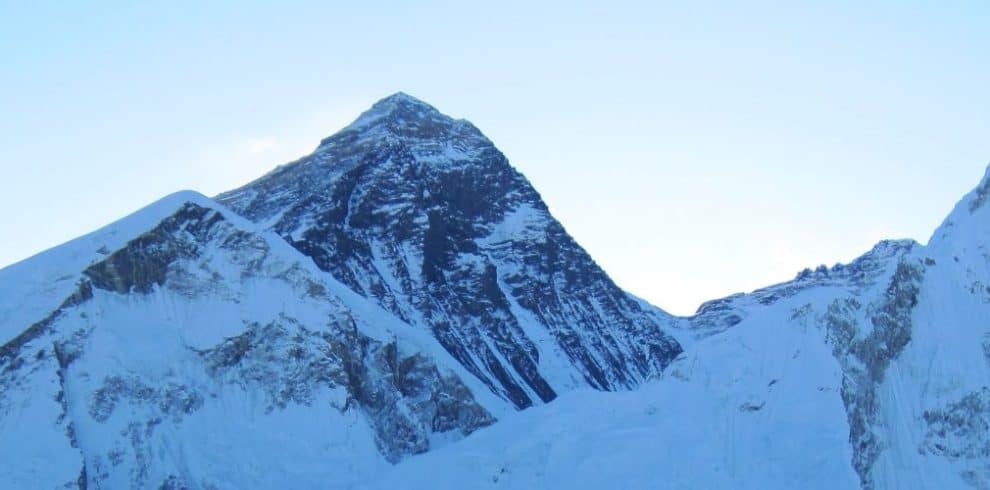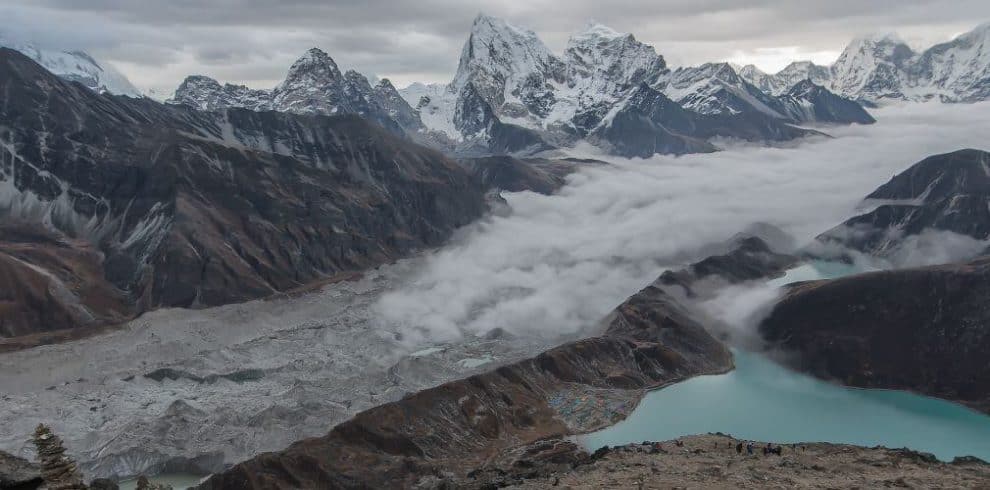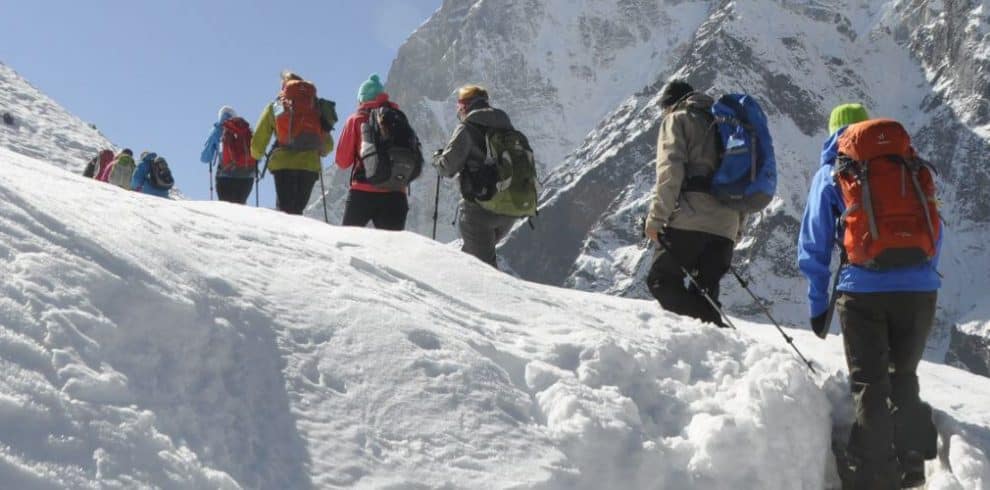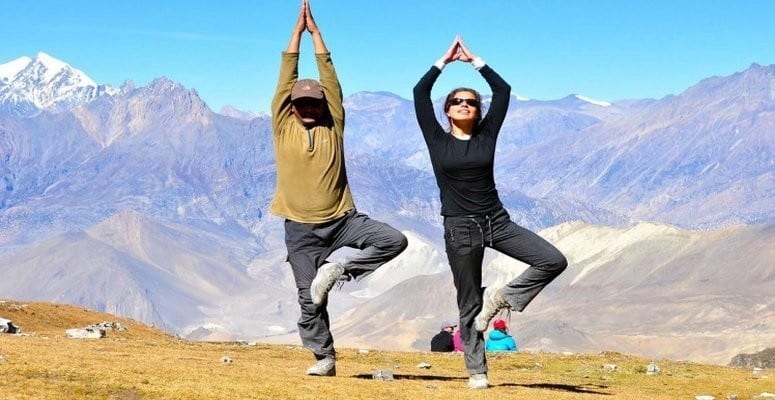If you’re considering trekking to Everest Base Camp solo, I encourage you to go for it! It’s an amazing experience that you’ll never forget. But before you do, there are a few things you need to know.
First, solo trekking is not for everyone. It’s a challenging journey, both physically and mentally. You need to be in good shape and have a strong sense of adventure.
Second, you need to be prepared. This means having the right gear, knowing the route, and being aware of the risks.
Third, you need to be aware of the new rules set by the Nepal Tourism Board(NTB). Effective from the 1st of April 2023, the Nepal government has introduced new regulations to make trekking in Nepal safer and to create more employment opportunities in the country.
So if you’re up for the challenge, solo trekking to Everest Base Camp can be one of the most rewarding experiences of your life.
In this guide, I’ll walk you through the new regulations set by the Tourism Board of Nepal, offer insights on the comparisons between group and solo treks, and candidly discuss the risk factors of venturing alone.
Contents
- What is the new law implemented by NTB?
- Risk Factors of Solo Trekking
- Advantages of Hiring a Guide
- Planning and Preparation for the Solo EBC Trek
- Rainbow Valley: Beauty and Terror in Mount Everest’s Death Zone
- Conclusion
- FAQs
- When is the best time for a solo trek to the Everest Base Camp?
- How physically fit must I be to undertake the Everest Base Camp trek solo?
- What kind of gear is necessary for the Everest Base Camp trek?
- What are the risks of solo trekking in the Everest region?
- Get in Touch with Our Trekking Experts Today
Do you have any question about trip to Nepal?
Tell us about your trip to Nepal and what you expect from it. We will answer your questions in 24 hours and help you design a trip with a comfortable itinerary to meet your needs best.
What is the new law implemented by NTB?
From April 1, 2023, solo trekking will no longer be allowed in Nepal’s national parks and conservation areas. Trekkers are required to obtain the services of a licensed trekking guide.
However, there is an exception for the Everest Base Camp Trek. According to the chief administrative officer of the Khumbu Pasang Lhamu Rural Municipality, individuals can still trek solo in the Everest region, provided they follow certain rules and regulations.
Although solo trekking is allowed in the Everest region, it’s important to be aware of the risks involved. Each year, there are unfortunate incidents of people going missing while trekking alone in the Himalayas of Nepal.
Check out the tabular data presenting tourist-related accidents/incidents reported in Nepal for the years 2077 B.S. and 2078 B.S.
| SN | INCIDENT | Shrawan | Bhadra | Ashoj | Kartik | Mangsir | Paush | Magh | Falgun | Chaitra | Baisakh | Jestha | Ashad | Total |
| 1 | Lost/Missing | 3 | 3 | 4 | 3 | 11 | 7 | 5 | 6 | 7 | 2 | 1 | 2 | 54 |
| 2 | Stolen/theft | 1 | 2 | 0 | 0 | 0 | 1 | 0 | 2 | 2 | 1 | 0 | 0 | 9 |
| 3 | Fraud/Cheating | 1 | 1 | 1 | 0 | 0 | 2 | 0 | 1 | 1 | 1 | 0 | 0 | 8 |
| 4 | Harassment/ dispute | 0 | 0 | 0 | 0 | 0 | 0 | 0 | 0 | 0 | 2 | 0 | 1 | 3 |
| 5 | Attack/Assault | 1 | 0 | 0 | 0 | 0 | 0 | 0 | 0 | 0 | 0 | 2 | 0 | 3 |
| 6 | Missing Person | 1 | 0 | 0 | 1 | 0 | 0 | 0 | 0 | 0 | 0 | 0 | 0 | 2 |
| Total | 7 | 6 | 5 | 4 | 11 | 10 | 5 | 9 | 10 | 6 | 3 | 3 | 79 | |
Source: Department of Tourism, Nepal/Tourist police
The data shows a significant number of incidents in the Everest region, with 54 people reported missing at different times.
These statistics underscore the importance of being well-informed about all the potential risk factors before embarking on the solo trek to Everest Base Camp.
Let’s discuss other possible risks that solo trekkers should be aware of to ensure a safe and enjoyable journey.
Risk Factors of Solo Trekking
Below are some factors that make the Solo trek in the Everest region challenging. However, one should also consider these factors when trekking in groups and with experienced guides.
- Safety Issues: Trekking alone means you’re in charge of your own safety. You might face problems like altitude sickness, injuries, or sudden changes in weather during your Everest Base Camp trek.
- Organizational Challenges: Planning a solo trek can be a lot of work. You will need to sort out permits, find places to stay, and navigate trails that you may not be familiar with. This can be a daunting task, especially if you are not experienced in trekking.
- Local Insights: Without a guide, you could miss out on learning about the local culture, history, and best trails. You may also have difficulty communicating with locals if you do not speak the local language.
- No Emergency Backup: A guide can be a big help if something goes wrong on your trek. They are trained to deal with emergencies, from health problems to unexpected events. If you are trekking alone, you will have to handle these situations by yourself.
- Loneliness: While quietness can be a positive aspect of solo trekking for some, it can also lead to feelings of loneliness, especially on longer treks. This can affect your overall trekking experience.
If you want to avoid such difficulties, choosing a professional trekking guide is one of the best solutions. A guide can be your companion and a teacher when trekking.

Everest Base Camp Trek is a classic trekking adventure in the foothills of the world’s highest mountain, Mount Everest. Trudging along the rugged trails of the Himalayas, decorated with mountains and landscapes, this trek is undoubtedly one of the best walks on earth. Regarded as the most popular trek in Nepal, Everest Base Camp Trek extends for 15 days. Along the way, you’ll get to marvel at some of the world’s highest massifs, including Mt. Everest, Lhotse, Ama Dablam, Thamserku, Cho Oyu, Pumori, Nuptse, and Makalu. Not only that, but this…
Advantages of Hiring a Guide
To give you a more comprehensive understanding, here is a comparison of the additional benefits of hiring a guide.
| Aspect | With Licensed Guide | Without Guide |
| Expertise and Local Knowledge | Get professional with in-depth knowledge of the region | Solely rely on your personal knowledge and research |
| Safety and Navigation | Ensure safety and handle emergencies | Be responsible for your own safety and navigation |
| Language and Cultural Bridge | Get an interpreter and facilitates exchanges | Direct interaction with locals |
| Local Support and Connections | Easy and informed access to resources and accommodations | Arrange accommodations and resources by yourself |
| Stress-Free Planning | Easy management of logistics, permits, and itinerary | Plan and organize the trek independently |
| Independence and Flexibility | Follow guide’s itinerary and pace | Choose your own itinerary and pace |
| Introspection and Solitude | Group dynamics and interactions | Enjoy solitude and self-reflection |
| Budget-Friendly | Additional cost for hiring a guide | More cost-effective for budget-consciousness |
| Personal Challenge | Guided support and assistance | Test of self-reliance and adaptability |
| Safety Precautions | Guide handles safety measures and equipment | Be responsible for your own safety |
For trekkers who still choose to embrace the solo trek despite the risks, thorough preparation and safety precautions are essential.
Planning and Preparation for the Solo EBC Trek
Let’s discuss what you should consider before embarking on this journey as a solo trekker.
1. Permit
You need to obtain:
- TIMS ( Trekkers Information Management System) card through an authorized trekking agency
- SNPP( Sagarmatha National Park Entry Permit)
- Khumbu Rural Municipality Permit
2. Travel Insurance
It’s important to remember that accidents can happen, especially at high altitudes, and having travel insurance can make a significant difference in any medical emergency’s outcome.
As an experienced trekker, I highly recommend investing in a reliable travel insurance policy before embarking on your Everest Base Camp adventure.
Learn more about travel insurance in this guide: Travel Insurance for Everest Base Camp Trek
3. Accommodation and Food Availability
When trekking solo in the Everest region, it is essential to be aware of the types of accommodation available. There are a few options, each with its own pros and cons.
- Teahouses
- Lodges
- Campsites
- Private homestays
Similarly, the food availability will vary depending on the accommodation you choose.
Here in this guide, I have covered everything related to accommodation and food during Everest Base Camp Trek.
You can check it out here: Food And Accommodation on Everest Base Camp Trek
4. Physical Fitness
Creating a training schedule is one of the beneficial steps in preparing for the EBC trek, as it helps you structure your workouts and ensures that you consistently progress toward your fitness goals.
The following is a plan to ensure your fitness. Remember, it is a general recommendation. Your training schedule should align with your physical ability and time.
| Day | Cardiovascular Exercise | Strength Training | Flexibility and Balance | Hiking Practice |
| Monday | 30 minutes of running or cycling | 3 sets of 12 reps of lunges, squats, and calf raises | 10 minutes of yoga poses like downward dog, warrior pose, and tree pose | – |
| Tuesday | – | – | – | 1-hour hike with inclines |
| Wednesday | 30 minutes of swimming or rowing | 3 sets of 12 reps of push-ups, pull-ups, and dumbbell rows | 10 minutes of Pilates exercises like single-leg stretch and the roll-up | – |
| Thursday | – | – | – | Rest day or light stretching |
| Friday | – | – | – | 2-hour hike with inclines and declines |
| Saturday | 30 minutes of high-intensity interval training (HIIT) like jumping jacks, mountain climbers, and burpees | 3 sets of 12 reps of bench press, shoulder press, and bicep curls | 10 minutes of stretching exercises like hamstring stretches and quad stretches | – |
| Sunday | – | – | – | Rest day or light stretching |
5. Cost
One of the important factors when travelling is cost management. You can decide your expenses at your convenience.
However, this is the general outlook of the expenses that come along with trekking solo to the Everest Base Camp.
| Title | Cost to a Single Trekker (USD) |
| Permit- Trekkers Information Management System | USD 18 |
| Permit- Khumbu Rural Municipality | USD 18 |
| Permit- Sagarmatha National Park | USD 31 |
| Flight- Kathmandu to Lukla (one way) | USD 180 |
| Bus from Kathmandu to Ramechhap (one way) | USD 5 – USD 15 |
| Bus to Jiri/ Salleri (one way) | USD 7/ USD 14 |
| Hotel- Phakding/ Monjo | USD 5 |
| Hotel- Namche Bazaar (2 nights) | USD 20 |
| Hotel- Tengboche/ Deboche | USD 5 |
| Hotel- Dingboche / Pheriche (2 nights) | USD 10 |
| Hotel- Lobuche | USD 7 |
| Hotel- Gorakshep | USD 7 |
| Hotel- Dingboche / Pheriche | USD 5 |
| Hotel- Namche | USD 10 |
| Hotel- Lukla | USD 5 |
| Meals- 12 days breakfasts/lunches/dinners | USD 300 |
| Hot Shower (per shower) | USD 3 – USD 7 |
| Battery Charging (per hour) | USD 1.5 – USD 5 |
| Everest Link Wifi Cards [600 MB/10 GB] | USD 5.5 / USD 17.5 |
Now that you know the requirements for your solo trek to Everest, I would like to inform you about one of the mysterious attractions in the region: the famous Rainbow Valley of Everest Region.
Rainbow Valley: Beauty and Terror in Mount Everest’s Death Zone
The Rainbow Valley is a section of the mountain known for its colorful appearance.
However, the vibrant hues are not due to natural phenomena, but rather the result of a grim reality. The “rainbow” is actually a collection of brightly colored mountaineering gear and clothing (jackets) that belong to climbers who have lost their lives on their journey to the summit.
The Rainbow Valley is situated just below the summit, in the Death Zone above 8,000 meters (26,247 feet). This is the most dangerous part of the climb due to the extremely low levels of oxygen, harsh weather conditions, and treacherous terrain.
Many climbers lose their lives in this zone, and due to the harsh conditions and risks involved, it is often impossible to retrieve their bodies. As a result, the bodies and the colorful gear they were wearing remain on the mountain, giving the area its rainbow-like appearance.
Despite its beauty, the Rainbow Valley serves as a reminder of the dangers associated with climbing the world’s highest peak. It is a place of both awe and respect, a testament to the human spirit and the risks some are willing to take in pursuit of their dreams.
Do you find it intriguing, and do you plan to go on your Everest journey? If yes, follow this guide, where I have talked about everything you need to know about Everest Base Camp Trek.
Conclusion
Undertaking the Everest Base Camp trek solo comes with extreme risks and challenges. Safety concerns, logistical difficulties, lack of local knowledge, limited emergency support, and feelings of loneliness are some disadvantages of trekking alone.
Nevertheless, hiring a guide for the Everest Base Camp trek offers advantages like route familiarity, updated information, assistance with gear, reliable food and accommodation, motivation, moral support, and first-aid knowledge.
It is crucial to thoroughly consider these factors and plan accordingly to ensure a safe and enjoyable trekking experience. Remember to respect the mountain and its surroundings while embracing the adventure of this remarkable journey.
FAQs
When is the best time for a solo trek to the Everest Base Camp?
The best time for a solo trek to the Everest Base Camp is during the pre-monsoon (March to May) and post-monsoon (September to November) seasons.
How physically fit must I be to undertake the Everest Base Camp trek solo?
You should be in good physical condition to undertake the Everest Base Camp trek solo. Regular cardio exercise, strength training, and altitude acclimatization are recommended.
What kind of gear is necessary for the Everest Base Camp trek?
Essential gear for the Everest Base Camp trek includes sturdy hiking boots, warm clothing, a good quality backpack, a water purifier, and sun protection.
What are the risks of solo trekking in the Everest region?
There are a number of risks associated with solo trekking in the Everest region, including: Altitude sickness, injuries, wildlife, and unpredictable weather.
Ready to book trips now?

The exciting 18 days long Lobuche East Peak Climbing adventure present you the chance to explore the serenity of the entire Khumbu Region. Plus, you will relish on an adventurous journey towards Everest Base Camp, from where the ultimate Everest Expedition gets underway. Popular as Island Peak Climbing and Mera Peak Climbing, this Lobuche East Peak Climbing expedition gets underway with an enthralling flight from Kathmandu to one of the world’s most extreme airports— Tenzing–Hillary Airport, Lukla. Following an enticing flight, you will start the trek that takes you through some of the magical trails….

Everest is more than a mountain, and reaching its base camp is more than a trek. Everest Base Camp Journey ( EBC Trek) is one of the best treks in the world. The world’s highest mountain, Mt.Everest (29,029 ft/ 8,848.68m) is centered in this trek. Every turn in the trail, termed "the stairs to paradise" by some, offers another photo opportunity: gorgeous woods, Sherpa communities, glacier moraines, and slopes. The high-altitude trek through the Sherpa country area brings you to the base of the world's tallest peak passing through hilltop monasteries, Himalayan market towns, and…

There are hundreds of mountains all over the world. But, only a few leave remarkable impressions on people as Ama Dablam does. Once you see Ama Dablam, it will remain in your memories for a lifetime. Ama Dablam translates to “Mother’s Jewel.” It gets its name from the locals who believe a glacier on its southwest side looks like “Dablam,” which is a traditional Sherpa jewel and “Ama,” meaning mother. The pinnacle of the peak has a striking appeal. Not just with its beauty, Ama Dablam attracts hundreds of climbers every year with its technicality…

Gokyo Chola Pass via EBC Trek is one of the most comprehensive trekking destinations in the heart of the Himalayas. This trek will take you through the rugged trails of the Khumbu region — from the top of Cho La Pass to the foothills of the world’s highest massifs. Gokyo Chola Pass via EBC Trek is among the most challenging tea house adventures in Nepal, demanding you to scale a high Himalayan pass at 5,367. This trek also guides you to two of the most famous viewpoints in the Himalayas — Kala Patthar and Gokyo…

Everest View Trek is probably the most famous trek in the Himalayan region of Nepal. It is one of the most adventurous and historic trekking trails which presents you with the mesmerizing views of mighty Mt. Everest. Everest region also encircles some other magnificent peaks like Mt. Lhotse, Mt. Cho Oyu, Mt. AmaDablam and Mt. Makalu. Namche bazaar is a gateway to the Everest region. Trekking through the route, you will come across cascading waterfalls, rivers, and forests filled with rhododendron (National Flower of Nepal), pine trees, etc. You can also explore Sagarmatha National Park…

Island Peak Climbing is one of the most beautiful trekking and peak climbing centers in the Himalayas. Located in the Everest/Khumbu region of Eastern Nepal, Island Peak Climbing is perfect for you if you are an adventure lover and enthusiast of energetic and challenging treks. The 19 days journey takes you through some of the surreal landscapes of the Everest/Khumbu Region until you conquer the top of magical Island Peak. Island Peak, also known as Imja Tse, stands at 6189 meters (20305ft) above sea level. It stands in the picturesque Imja Valley in the Everest…

The Everest Base Camp luxury heli Trek is designed for people who are short on time but still want to scale the base of the tallest mountain in the world. The trek is one of the most esteemed treks in the world.Towering peaks,majestic vistas, deep gorges with crystal blue rushing rivers and the wonderful Sherpa people all go to make this trek a very memorable one,We recognise that not all people have the time to complete the full trek so this trek is designed for them. The park is situated 120km northeast of Kathmandu.and has…

To stand atop Everest is a dream for every alpinist. That’s understandable, as it is the highest point on earth at the altitude of 8848m (29029ft). Everest has attracted mountaineers from all over the world for decades and continues to do so. It’s glorifying history, and the alluring natural appeal is what makes these climbers dream so big, bigger than Everest itself. After the first ascent in 1953, Everest was opened for mountaineers to climb. Out of the several attempts to conquer the peak, some made it while some of the top mountaineers couldn’t. Several…

Everest High Passes Trek, also known as the Everest Circuit Trek, is one of the most comprehensive adventures in the Himalayas of Nepal. On this trek, you will be traversing through the rugged trails of the lower Khumbu region, navigating three high Himalayan passes, and standing at the foothills of the world’s highest massifs. Often regarded as one of the most demanding teahouse adventures in Nepal, the Everest High Passes Trek requires you to scale three high passes above 5,000 meters, namely Renjo La Pass, Cho La Pass, and Kongma La Pass. Among the three…

Everest Base Camp Trek is a classic trekking adventure in the foothills of the world’s highest mountain, Mount Everest. Trudging along the rugged trails of the Himalayas, decorated with mountains and landscapes, this trek is undoubtedly one of the best walks on earth. Regarded as the most popular trek in Nepal, Everest Base Camp Trek extends for 15 days. Along the way, you’ll get to marvel at some of the world’s highest massifs, including Mt. Everest, Lhotse, Ama Dablam, Thamserku, Cho Oyu, Pumori, Nuptse, and Makalu. Not only that, but this trek combines the glorious…

The majority of people keen on trekking who visit Nepal who want to soak in the Everest experience choose the easier option by taking a flight from Kathmandu to the mountain airstrip of Lukla..However, for those who prefer to make their encounter with this giant a much more traditional and historical one we follow the footsteps of Sir Edmund Hilary and Tenzing Sherpa on the first successful recorded summit way back in 1953. This Classic Everest Trek is far less busy,it provides some beautiful initial days as you trek through forests of silver fir, birch…

Your adventure begins when you board your shuttle for the ride to the top the mountain. Your guide will narrate as you pass through the village of Sarangkot and then up the mountainside. Once on top you will take a short walk to the Butterfly Pavilion, an architectural marvel with breath-taking views of the Himalayan range. While you sip coffee and wait for your turn we assure your wait will be exciting. At 5400 feet above sea level you will sit into a special harness seat and await your launch. Two guests launch at once,…





